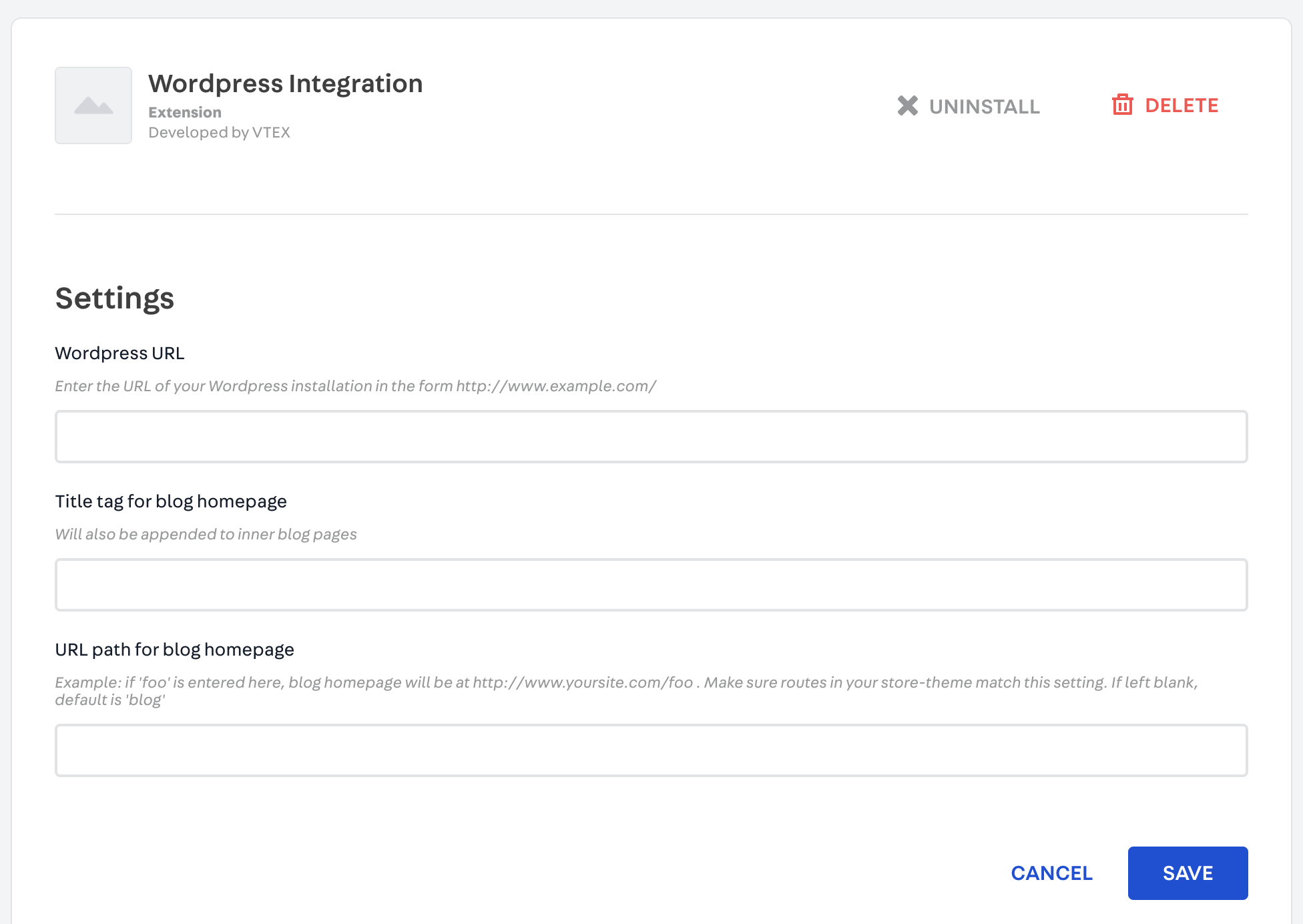Manifest
Learn more about the manifest file, a crucial document containing metadata that defines and shapes the core attributes and functionalities of a VTEX IO app.
Every VTEX IO app must have a manifest.json file in its root folder. This file serves as the initial point of communication with VTEX IO and holds important metadata about an app, such as its name, version, vendor, description, and dependencies.
Fields
Check the following snippet, which shows a manifest example and its supported fields.
Click each field to learn more.
For a real example of a manifest.json file, check out this file.
name
The app name. It should concisely express the app's purpose.
App names are in kebab case. Basically, they must consist of lowercase letters separated by hyphens. Special characters, such as * and @, and numbers at the beginning of the name are not recommended.
vendor
The app owner, i.e., the VTEX account responsible for the app development, maintenance, and distribution.
If the app is to be sold on the VTEX App Store, the vendor will profit from its installation. Therefore, remember the following: an app must have only one vendor. Even if the app is installed on multiple accounts, you should not change the app's vendor value for each account.
version
The app version, following Semantic Versioning 2.0.0.
For more information, see Understanding app versioning.
title
The app distribution name. This name is the one used in the Apps section of the Admin and in the VTEX App Store.
description
A brief description explaining the app's purpose.
builders
The list of builders used by the app. A builder is an abstraction for configuring other IO services, such as node, dotnet, react. It acts as an API service, which processes and interprets a directory from the app. Hence, you can use as many builders as you want in a single app.
For example, if you want to develop React components in an app, you should use the builder react@3.x and declare it in the manifest:
_10"builders": {_10 "react": "3.x" _10}
And create a react folder inside the app, adding the component files. Each builder has its own set of rules and validation processes.
For more information, see Builders.
scripts
The list of scripts the app runs.
dependencies
The list of other VTEX IO apps that the app relies on to properly work.
The most recurrent use of VTEX IO apps as dependencies is for:
- Using VTEX Store Framework blocks.
- Importing React components from another app.
- Importing Typescript types from a GraphQL service app.
- Using GraphQL or REST definitions declared in another app.
- Implementing a GraphQL schema from another app.
For more information, see Dependencies.
peerDependencies
The list of other apps that the app relies on to properly work. However, unlike regular dependencies, peer dependencies are not automatically installed in an account. Hence, these are mostly used in cases where an app relies on paid apps or a specific version of an app.
For more information, see peerdependencies.
policies
The list of policies that grant permissions to the app, in case it needs access to external services or specific data from other sources, such as external APIs.
For more information, see Policies.
settingsSchema
The layout settings of the app displayed in the VTEX Admin.
Using JSON Schema, you can accept multiple fields with multiple data types. The VTEX Platform manages the persistence of information, and you may fetch the current configuration in your app code.
For example, in the vtex.wordpress-integration app, the following settingsSchema:
_21"settingsSchema": {_21 "title": "Wordpress Integration",_21 "type": "object",_21 "properties": {_21 "endpoint": {_21 "title": "Wordpress URL",_21 "description": "Enter the URL of your Wordpress installation in the form http://www.example.com/",_21 "type": "string"_21 },_21 "titleTag": {_21 "title": "Title tag for blog homepage",_21 "description": "Will also be appended to inner blog pages",_21 "type": "string"_21 },_21 "blogRoute": {_21 "title": "URL path for blog homepage",_21 "description": "Example: if 'foo' is entered here, blog homepage will be at http://www.yoursite.com/foo . Make sure routes in your store-theme match this setting. If left blank, default is 'blog'",_21 "type": "string"_21 }_21 }_21 }
This will generate the following form once that app is installed:

For more information, see Creating an interface for your app settings.
[DEPRECATED] credentialType
The credential type. When set as relative, an app request can only be performed if the app and the role who called it have the required permissions. When set as absolute, a request from the app can be performed if the app has the necessary permissions.